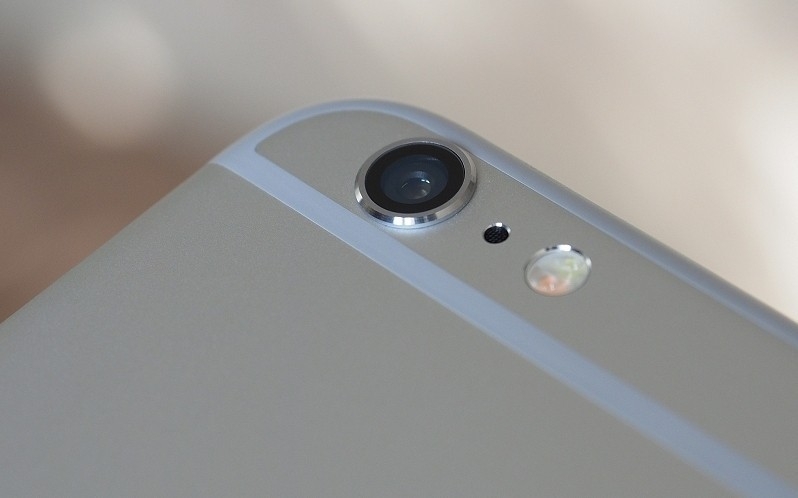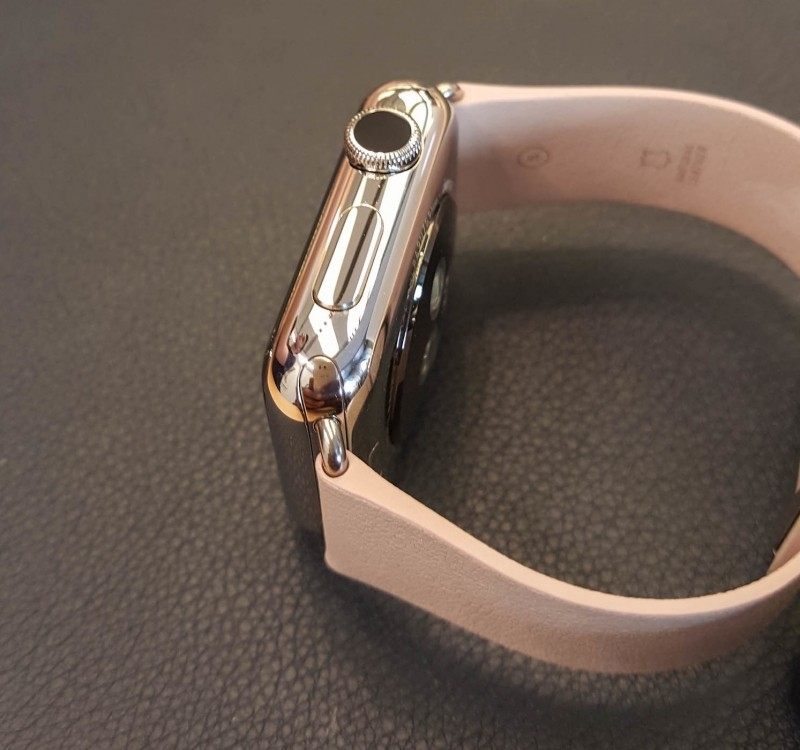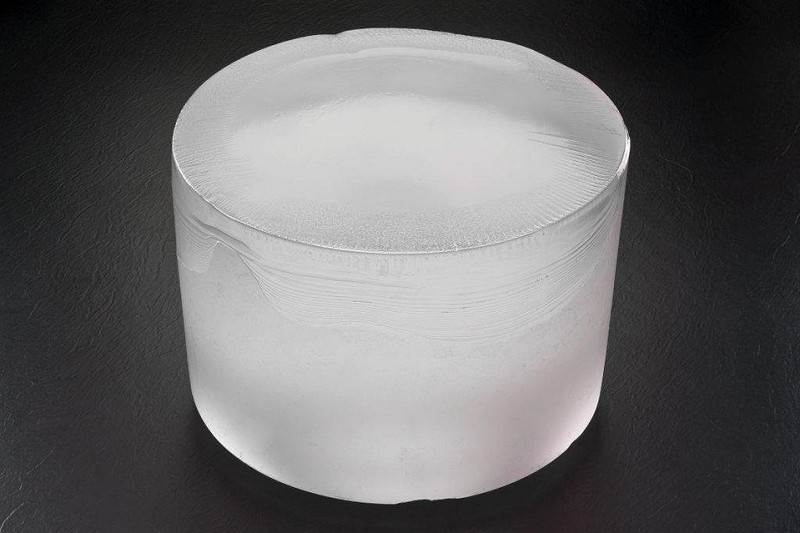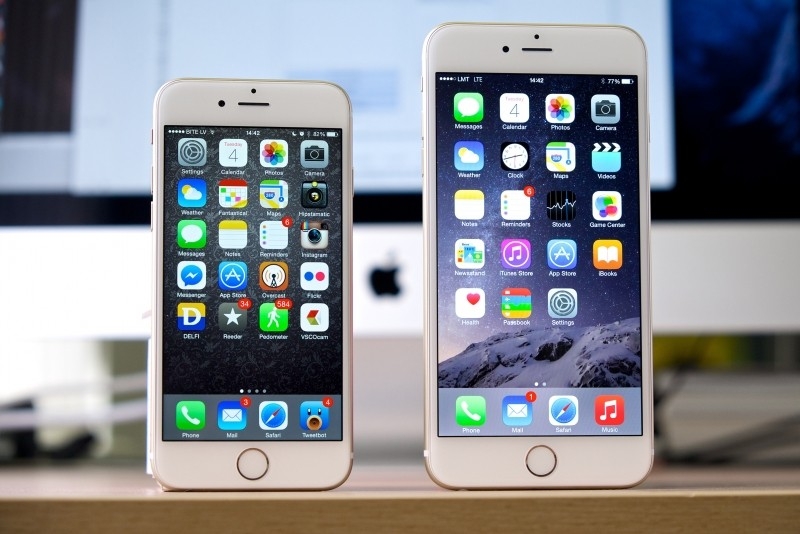With Apple's next wave of mobile products expected to arrive beginning next month, we've waded through the sea of rumors and leaks to highlight the most credible and likely of the bunch.
Barring any unforeseen circumstances, it's a safe bet that we'll see a pair of new iPhones arrive in September. The new handsets are expected to look virtually identical to Apple's current generation although a closer look at purported leaked components offers a bit more insight.
In this video from MacManiack published earlier today, we see what is believed to be the front frame of the iPhone 6s. Of particular interest is an access panel that gives credibility to earlier rumors that the new phones will feature the same Force Touch technology found on the Apple Watch. A different flex connector points to an improved Touch ID sensor and what appears to be a slightly larger cutout for the front camera indicates a higher-quality selfie shooter is in the works.
Earlier rumors and precedent suggests Apple will outfit its new "s" model iPhones with its A9 processor alongside 2GB of RAM. The rear camera is also expected to get a resolution bump from eight megapixels up to 12-megapixels. Apple has traditionally steered clear of the megapixel race although it has likely squeezed out just about everything it can from the current sensor.

The new camera may or may not be the DSLR-killer that we've heard so much about this year but it'll likely introduce 4K video recording and improve on the 240 frames per second slow-motion feature found it its current implementation. Adding 4K would be a welcomed addition for the iPhone as many other rivals already offer the option and have for quite some time.
I mentioned that the new iPhones will be virtually identical to current iterations but that may only partially be true.
It's entirely possible that Apple may introduce a brand new color for its next iPhone - rose gold - to match that of the Apple Watch Edition. It would join the existing space gray, silver and gold color schemes.

Apple's new smartphones may also adopt the 7000 series aluminum used to construct the Apple Watch Sport. This type of aluminum, used in competition bicycles, is 60 percent stronger than most aluminum without adding any additional weight. This along with an internal design revision would like eliminate the Bendgate controversy that made the rounds following the launch of last year's iPhone 6 Plus.
Speaking of Apple's phablet, scuttlebutt suggests at least some variants could ship with sapphire glass screens. The original iPhone 6 Plus was supposed to use the hardened material but those plans were derailed when it became evident that supplier GT Advanced Technologies couldn't hold up their end of the production deal.

When word got out that Apple would launch a 128GB iPhone last year, many believed the new storage lineup would consist of 32GB, 64GB and 128GB options. Instead, Apple ditched the 32GB model and currently offers options of 16GB, 64GB and 128GB. Most believe Apple will stick with the same 16GB, 64GB and 128GB capacities offered today although some think Apple will swap the 16GB for the 32GB as it should have done last fall.
A cooling tablet market has led to some tough times for the iPad. Apple is well aware of this fact and thus, may bundle its next iPad announcement in with the iPhone media event in September. Traditionally, Apple has hosted a separate media gathering for its new iPads.
Last year's iPad Air 2 saw marginal improvements over its predecessor; the third-generation iPad mini, however, was a total joke which led some to wonder if Apple would be discontinuing the line in the near future. That doesn't appear to be the case as the latest rumors claim the fourth-generation iPad mini could be the slimmest yet.
Purported computer-aided draft (CAD) images of the iPad mini 4 claim it will measure just 6.1mm thick, far slimmer than the 7.5mm of the third-generation unit. Footprint aside, the new iPad mini is forecasted to include a faster A8 processor, 2GB of RAM and an 8-megapixel rear iSight camera like the one found on the current iPhones.
The bigger news around the iPad continues to be the larger variant, something I call the iPad Plus. Expected to compete with Microsoft's Surface line, the iPad Plus is rumored to have a 12-inch display that'll be marketed to enterprise users.
Back in May, it was rumored that Apple was sampling silver nanowire material from multiple display suppliers. This material is more flexible than traditional touch panels and could allow Apple to more easily integrate its Force Touch technology into a tablet.

The use of a stylus may not be out of the realm of possibility for the iPad Plus given its penchant for productivity. Also on the docket is true multitasking, something that's been sorely missed on Apple tablets. The company is said to be working on 1/2, 1/3 and 2/3 views depending on the app being used. The split screen technology will offer multiple views of different apps or of the same app.
Rumblings on the larger-screen iPad have been mum as of late with the last we've heard suggesting it may not arrive until sometime next year.
The iPhone 6s, iPhone 6s Plus and smaller iPads are all expected to be announced at a media event in early September, perhaps on September 9 which is the same day as last year's iPhone event.
